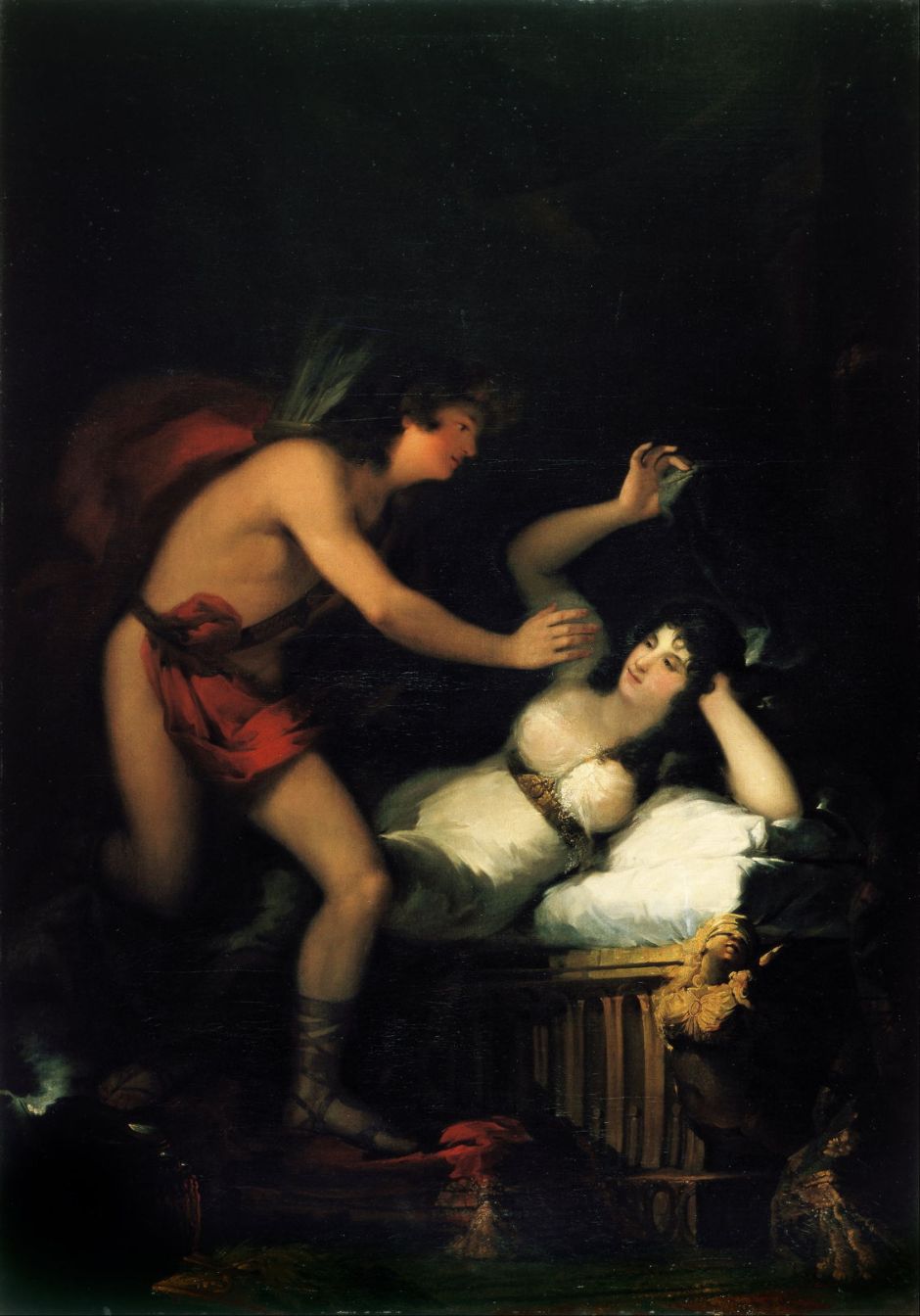In my previous article about the paintings of Francisco Goya (1746–1828), I showed two scenes of witchcraft which are from a series of six that he painted for the Duchess of Osuna in 1797-98. I start this article with a third from that series, showing The Bewitched Man (1797-98).

The origins of this image become clear with the inscription at the lower right, and its apparently theatrical setting. This is a scene from a play by Antonio de Zamora, El hechizado por fuerza, or The man bewitched by force, first performed a century earlier. The hero of this play comes to believe that he has been bewitched, and that he will die if this oil lamp goes out. Goya’s use of light and shadow is masterful.
On 1 August 1798, Goya started painting what was to be his third and last great fresco, in the Ermita de San Antonio de la Florida, Madrid. It’s claimed that he completed this 5.5 metre diameter cupola just 120 days later.

The main section shows The Miracle of Saint Anthony of Padua (1798) in quite unconventional terms. The traditional account claims this to have occurred in Lisbon during the thirteenth century. The saint’s father had been unjustly accused of murder, and the miracle took place in the courtroom, just before the father was due to be sentenced to death.
Not only does Goya give no clues as to its location, but he departs from the compositional approach favoured by Tiepolo, and appears here more influenced by Veronese’s Wedding Feast at Cana (1563), perhaps. The majority of the figures are placed around a balustrade at the base of the cupola, with angels scattered across other sections of wall around the lower structure of the church.

This reduction of the main motif, now in the Carnegie Museum of Art, Pittsburgh, PA, shows more clearly its elongated narrative, and how Goya transplanted it to contemporary Spain.
In 1919, Goya’s remains were transferred to this chapel, which became his mausoleum, and is accompanied by a replica of the original church nearby.

Goya is documented as having completed this painting of The Arrest of Christ at the end of the same year (1798), and to have presented to the Academicians on 6 January 1799. As it met with their approval, two days later it was delivered to the Archbishop in the Cathedral of Toledo. However, it’s believed that it may have been commissioned a decade earlier, and progress delayed all those years by Goya’s illness and other circumstances. There’s also a very painterly preparatory sketch for this in the Prado. It shows the well-known scene from the Passion in which Christ is arrested at night.

Later in 1799, he completed three altarpieces for the Church of San Fernando in Monte Torrero, near Zaragoza, which were tragically destroyed there in 1808 (or perhaps in 1810 during the Battle of Zaragoza). His sketches for the three survive, from which this is for Saint Hermenegild in Prison. This saint, also known as Ermengild, was the son of the Visigothic King Liuvigild, and died a martyr rebelling against the tyranny of his father in 585. He was imprisoned in the Tower of Seville, where he refused the Eucharist from an Arian bishop, for which he was beheaded.

The Sleeping Woman, originally El Sueño, from about 1800, is a brilliant oil sketch full of softness and subtlety which demonstrates Goya’s rich markmaking.

Very few of Goya’s surviving paintings show scenes from mythology. Among them, this Allegory of Love, Cupid and Psyche, painted between 1798-1805, is believed to have been his last. The couple are depicted in classical, rather than contemporary, form, in the depths of night.
This story is the basis of Apuleius’ Metamorphoses or The Golden Ass, which tells of the love between the couple, its many obstacles, and their eventual marriage. This was often turned into allegory, and a popular theme for paintings.
References
Spanish painting in the late eighteenth century: before David (this blog)
Spanish painting in the late eighteenth century: after David (this blog)
Janis A Tomlinson (2020) Goya, A Portrait of the Artist, Princeton UP. ISBN 978 0 691 19204 8.
Pierre Gassier and Juliet Wilson (1981) The Life and Complete Work of Francisco Goya, 2nd English edition, Harrison House. ISBN 0 517 353903.

